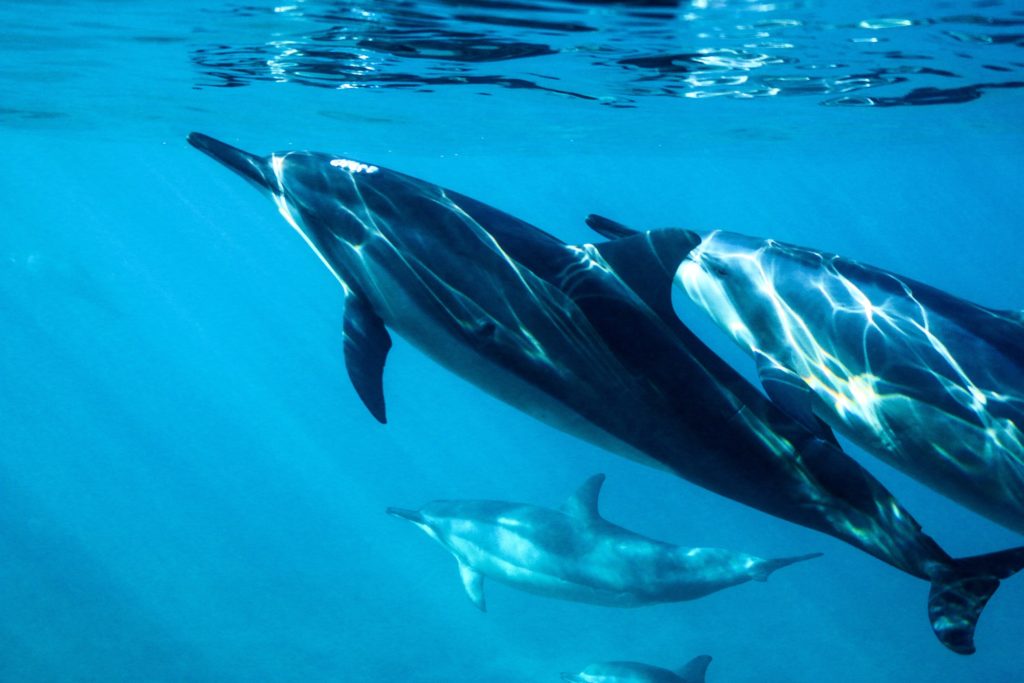
Scientists have found that the metabolic changes that allowed whales and dolphins to adapt to their aquatic lifestyle have implications on how we should assess the impact of human activities on their conservation.
Human activities such as shipping, tourism, offshore construction, and naval exercises have an impact on the foraging opportunities of sea mammals, which in turn can impact their ability to reproduce. When dolphins and whales are disturbed too often, they are not able to eat enough to keep their calves alive. That is at least what we think based on our understanding of the way terrestrial mammals handle ‘deficits’ in their energy.
New research published in Conservation Physiology from the University of Aberdeen and the Technical University of Denmark (DTU) shows that the way energy is handled by sea mammals has radically changed compared to their terrestrial counterparts. They live in an environment where they have to keep thick layers of fat to avoid hypothermia and where they rely on protein and fat rich, but sugar poor, prey. Their energy metabolism has changed so drastically that we cannot assume it will work the same way as in terrestrial mammals, particularly in the way they might compound foraging disruptions on their energy budget.
Dr Davina Derous from the University of Aberdeen’s School of Biological Sciences said: “Many people may not realise that dolphins and whales are close relatives of land mammals such as cows and sheep. Around 53 million years ago their ancestors re-entered the oceans and evolved to become the fully aquatic mammals we know today.
“It is not just the shape of their body that changed during these adaptations to marine life, but also their physiology.
“Scientists now have access to many genomes of whales and dolphins and therefore we could study how these changes accumulated and whether changes across many genes led to changes in the way their metabolism works. We did this by comparing the sequences of genes associated with energy metabolism in dolphins and whales and in their land-based relatives.
“We found that their genes have adapted to cope with a low glucose diet, to overcome the damaging effects caused by the lack of oxygen during diving and that the way fat storage signals energy state to the rest of the body differs drastically compared to land mammals.
“Dolphins and whales have evolved to have this really thick layer of fat right under their skin called blubber and the way they use up that fat storage when food is limited might be completely different to land mammals. That is because blubber also functions as a layer of insulation in the cold sea water and to help them float/dive, and therefore they cannot use all of it as an energy fuel. They might have what we consider a normal amount of fat, but this might not reflect what is happening below the surface on a cell level. We conclude that the way reproductive investment is going to be affected by foraging disruptions is likely more complex than we think and reduced reproductive investment may happen earlier than we think in some cases.”
Professor David Lusseau from DTU Aqua added “This research using new approaches of studying dolphins and whales, helps us to gain some fundamental insights about the way energy metabolism works in them. It turns out it has implications for the way we assess the potential conservation impacts of disturbances caused by human activities at sea for example, measuring their fat layer to see how healthy they are. There are a number of marine mammal species that we now know are threatened by human disturbances and so this fundamental physiological work is going to help us better assess how we can mitigate it and estimate what might be safe levels of exposure.
“We need to start from scratch to understand how fat cells talk to the rest of the body to regulate appetite and reproductive investment in whales and dolphins. We now have the tools, and the genomic information, to ask these questions more precisely.
“This study shows that our textbook understanding of the way metabolism works in mammals needs to be completely overhauled to understand the metabolism of dolphins and whales.”
This research was funded by the US Office of Naval Research.
Notes for Editors
| Notes for Editors | Press Release: https://www.abdn.ac.uk/news/14657/ Issued by: The Communications Team, Directorate of External Relations, University of Aberdeen, King’s College, Aberdeen Phone: +44 (0)1224 272014 Contact: Laura Graham Issued on 05 February 2021 Photo by TJ Fitzsimmons on Unsplash |
| Published | Friday February 5th, 2021 |





















































